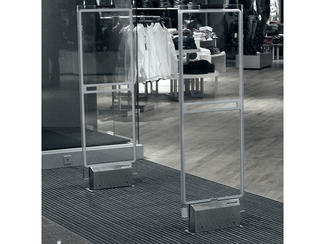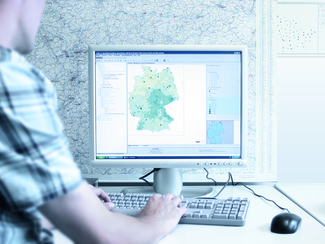Application/occurrence
Static and low frequency electric and magnetic fields are all around us in many forms everyday: for instance, static fields come from tramways or high voltage direct current (HVDC) transmission, and low-frequency fields are associated with electrical appliances, power lines and the railway grid. Anti-theft devices in department stores and supermarkets sometimes use low frequency fields. Magnetic resonance tomography (MRT) in medicine is based on strong static magnetic fields, among others. Electric cars or hybrid vehicles, of which the driving systems also create low frequency electric and magnetic fields, will play an important role in the future. The so called magnet-based remedies are rare applications.

Electronic article surveillance systems (EAS) are deployed in retail stores to protect against theft. Special tags which are attached to the products interact with the electromagnetic field of detectors mounted at the entrance/exits of the stores. They can cause an alarm.

Transformer stations (final distribution substations) are used within distribution networks to transform the electric energy from several thousand volts (medium voltage) to 230 or 400 volts (low voltage) used in homes. One transformer station can feed several low voltage circuits and serve some ten or hundreds households.

Induction cookers operate on the following basic physical principle: electric currents are induced in electrically conducting objects, a saucepan for example, by a changing magnetic field. This current heats the saucepan directly.

Apart from the widespread sources of electric and magnetic fields as, e.g., household appliances and electric installations as well as power supply installations there are some other very special applications available, which cause static or low frequency fields in their environments.

In many places, the public power supply at low-voltage grid level is provided by means of underground cables. Overhead power lines are mainly used for the national distribution and transmission of electricity over long distances. The main frequency is 50 hertz. Low-frequency magnetic fields occur in the vicinity of the lines; in the case of overhead power lines electric fields are also produced. Houses, elevations on the ground or vegetation may result in distortions of the electric field below overhead power lines.
In addition to lines, substations and transformer stations are further components of public electricity supply networks.

Low-frequency electric and magnetic fields are generated by household appliances and electrical installations in the home. In Germany the safety of electric devices is regulated by product standards that are based on the product safety law. When these standards include exposure assessments, the assessements are based on comparisons with the limits recommended by the Council of the European Union.

Just like any other electrical office or household equipment, television and computer screens generate low-frequency electric and magnetic fields. These are mainly alternating electric and magnetic fields with a frequency of 50 Hz, which is the regular power supply frequency.
A study on the "Assessment of the Bavarian citizens' exposure to low frequency magnetic fields" conducted by BfS on behalf of the Bavarian State Ministry for Regional Development and Environmental Affairs (Bayerisches Staatsministerium für Landesentwicklung und Umweltfragen) from May 1996 to June 1997 suggests an arithmetic mean value of 0.101 microtesla and a median value of 0.047 microtesla for all individuals under study, based on 24h-measurements carried out using body worn dosimeters.









